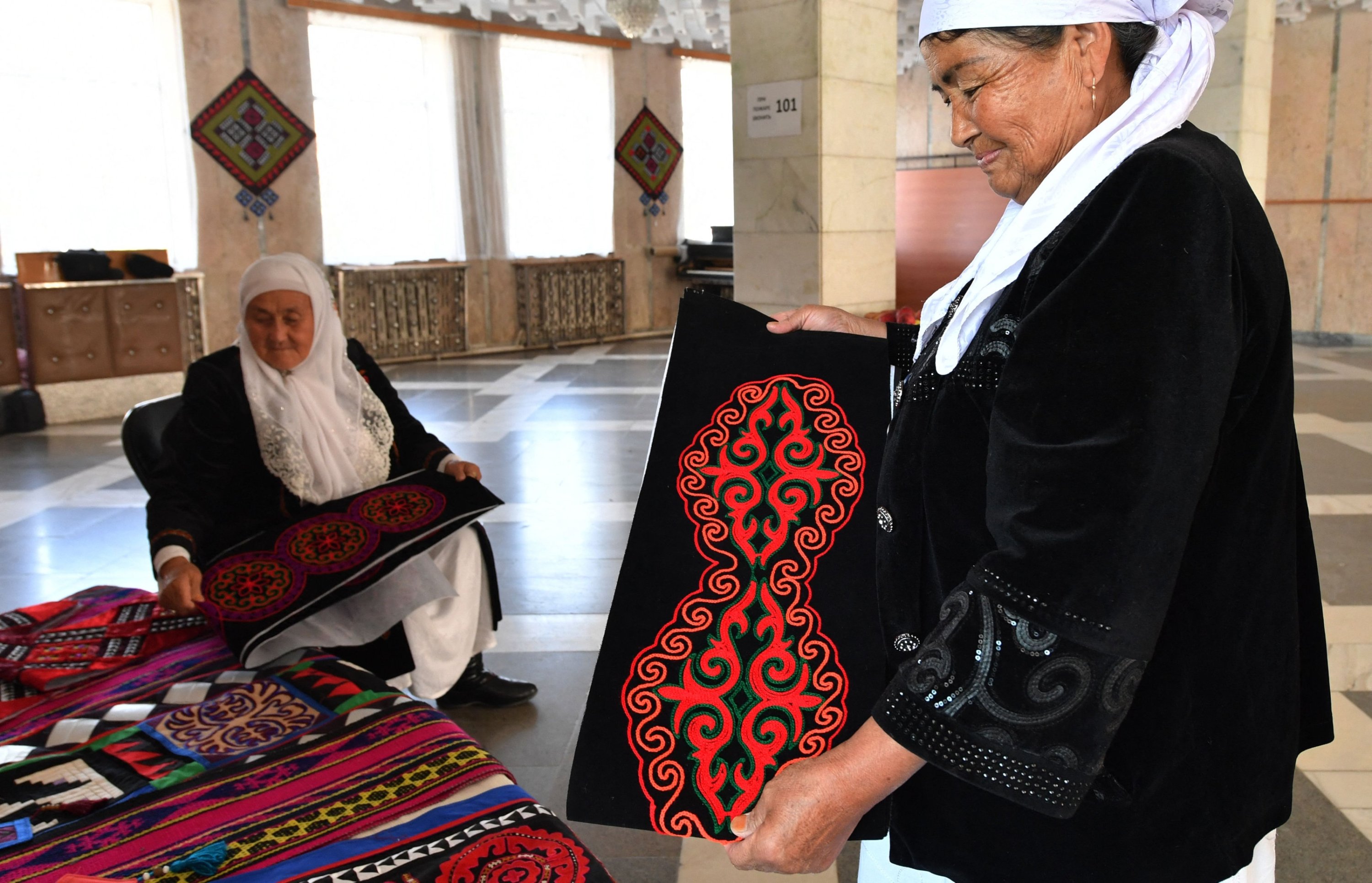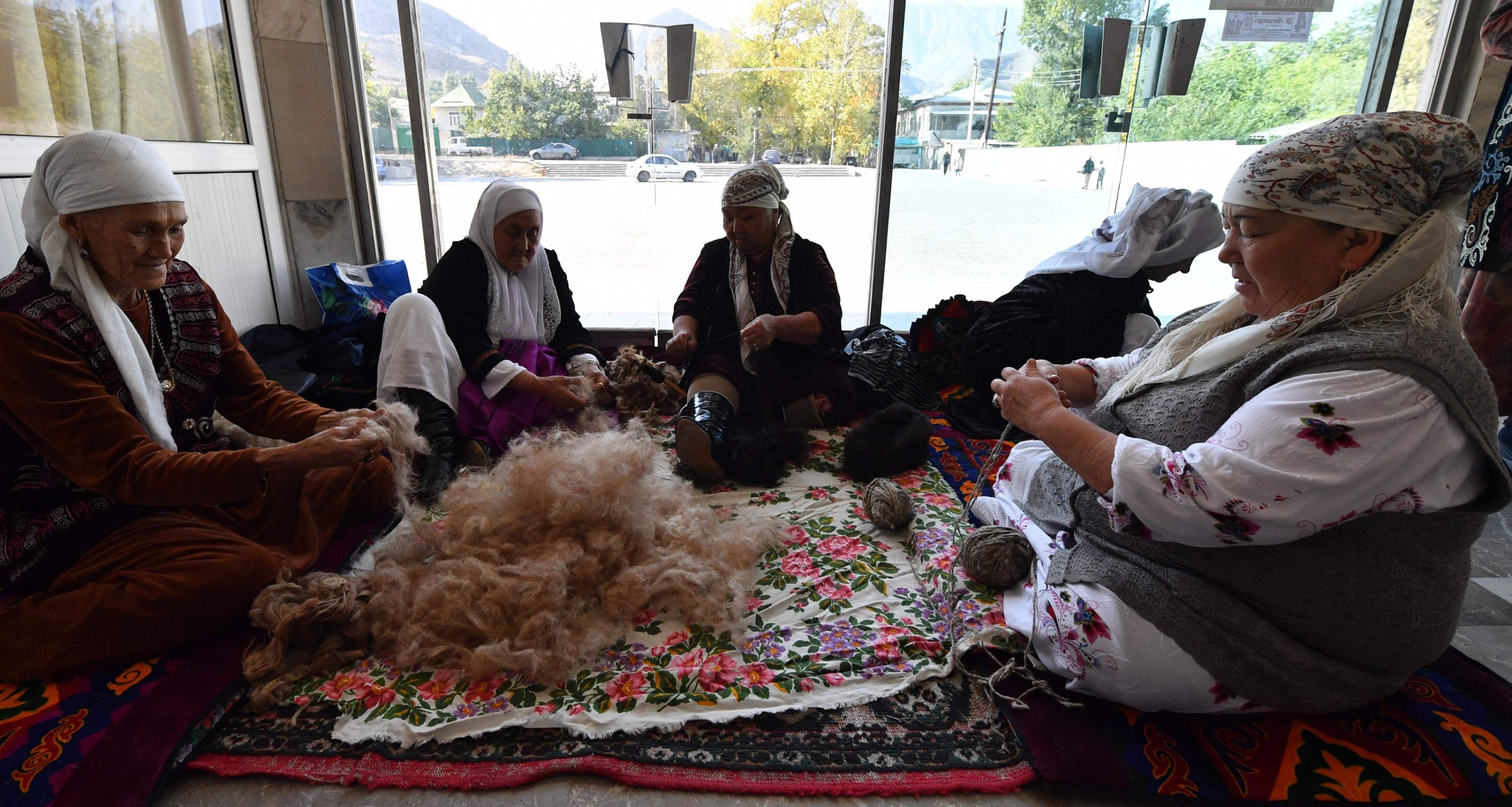© Turkuvaz Haberleşme ve Yayıncılık 2026
Tashkan Khakimova, aged 77, hunched over a rustic wooden weaving machine in the remote mountainous region of Batken, Kyrgyzstan. With nimble fingers, she expertly manoeuvred wool, employing a traditional rug-making technique.
A young schoolgirl held the remaining wool next to Khakimova, dressed in a white headscarf and a velvet jacket with traditional embroidery on it.
After several hundred hours of work, the wool will be transformed into a shyrdak – a traditional Kyrgyz rug.
Khakimova is one of a shrinking number of mostly elderly people living in the Central Asian country's mountainous areas who know how to make a shyrdak.
Many worry that ancient art will die out.
"Our parents taught us the technique, but people are forgetting it," Khakimova told Agence France Presse (AFP).
She is part of a group of older women calling themselves the "Happy Grandmas" who meet in the small town of Kadamjay – nestled between the Alay mountains – to preserve the endangered craft and boost their meager pensions.
UNESCO has warned that the skill of making the unique rugs is "in need of urgent safeguarding," with an abundance of synthetic carpets and the young being mostly disinterested.

The "Happy Grandmas" have a mission: to attract Kadamjay's youngsters to learn the ancient technique.
The group of around 20 women meet several times a week in the local Soviet-era house of culture, encouraging school children to learn how to weave.
"We come here so that this craft can be passed on from generation to generation, to teach it to young people," Khakimova said.
Rakhat Dzhoroyeva, another woman in the group, said it was important to preserve the rugs as "these are customs that we inherited from our ancestors."
"We don't want to sit at home with our arms crossed," she said. "We decided to continue the tradition."
The women use wool from their own animals to make the rugs.
"Production costs nothing," Dzhoroyeva said, adding that wool is collected from cattle, sheep and goats and that "nothing goes to waste."
She energetically lifts threads with a comb to strengthen the knots of the brown carpet she is making.
The shyrdak will then be decorated with colourful traditional patterns recalling the nomadic culture of the Kyrgyz people, before being cut out and quilted to make it more resistant.
The pensioners meet at the "House of Culture of the Metallurgists" of Kadamjay – a city built in the 1930s around a huge metals factory that is now shut down.
Hoping to "attract the young," the women take centre stage in the building, with their traditional singing reverberating around the marble hall.
Curious schoolgirls walk past, with a 6-year-old soon crouching down to examine the work done by the retirees.

Living in Kyrgyzstan's poorest region, the "Happy Grandmas" also hope selling the homemade rugs will boost their pensions.
"I get around 6,000 som in pension (around 64 euros a month)," said Saliya Bozhoyeva, another woman in the group.
"We can sell rugs for several hundred euros, it allows me to compensate (for) my pension."
The rusty, abandoned metals factory – which used to employ many of the women – towers over Kadamjay.
Its bankruptcy has led to unemployment and an exodus of the working population.
"My husband and I used to work at the factory, but today young people are forced to look elsewhere," Khakimova said.
Like many families in Kyrgyzstan, her children have gone to Russia – a traditional place of employment for Central Asians – to look for work.
But the "Happy Grandmas" have some hope: there has been a renewed interest in traditional Kyrgyz carpets.
Easing tensions with neighbouring Uzbekistan have raised the possibility of attracting tourists to this remote region and the chance to strengthen the local economy – with some orders even coming from abroad.
"We have a lot of orders, mainly from Bishkek," said Dzhoroyeva.
She added, joyfully: "And soon, we will send a rug to Japan."
